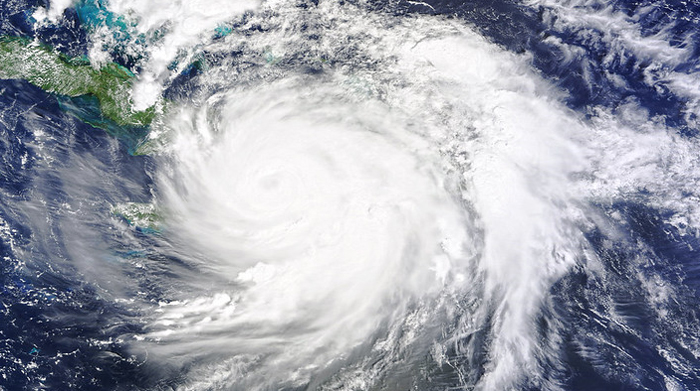The Difference Between Cyclones, Typhoons and Hurricanes

Image courtesy of NASA Goddard Space Flight Center under Attribution 2.0 Generic License, resized to 700 x 391 pixels.
Over the years (or, ahem, decades…), I’ve seen a lot of confusion around the difference between cyclones, typhoons and hurricanes. While all 3 are large-scale, closed-circulation storms that form over warm ocean waters, the exact name they are referred to is region-specific. Read on for a quick primer!
Cyclones Vs. Typhoons Vs. Hurricanes
Again, the specific term used primarily depends on the region of the world the event is occurring in. Let’s take it one by one.
Cyclones are powerful storm systems that form in the Indian Ocean and South Pacific, typically when ocean waters are warmer than 80 degrees Fahrenheit. The warm ocean water causes the air to rise, which in turn creates a low-pressure system, and then it cools and condenses which helps fuel the storm. Like all 3 versions, the characteristic spin of the storm is generated by the rotation of the Earth (this is called the Coriolis effect).
Typhoons, on the other hand, are similar but form in the Northwest Pacific, often hitting countries like China, Japan, Taiwan and the Philippines. This region experiences the highest frequency of tropical storms in the world, and wind speeds exceeding 150 miles per hour are not unheard of.
Hurricanes are the term of choice here in the U.S., and they mainly form in the Atlantic Ocean during hurricane season (June 1 to Nov. 30). That said, they also sometimes appear in the Pacific Northwest. Like cyclones and typhoons, warm ocean water, pre-existing weather instability, and moist air provides the fuel. Hurricanes are rated on a 5-catrogry scale (Saffir-Simpson Hurricane Wind Scale), with Category 5 being the most severe.
Again, here in the U.S. we are concerned with hurricanes, but cyclones and typhoons are essentially the same thing. No matter what you call it, utilities in every sector – electric, gas and water – must have a solid emergency preparedness structure and set of resources in place to handle these events as efficiently and effectively as possible.



